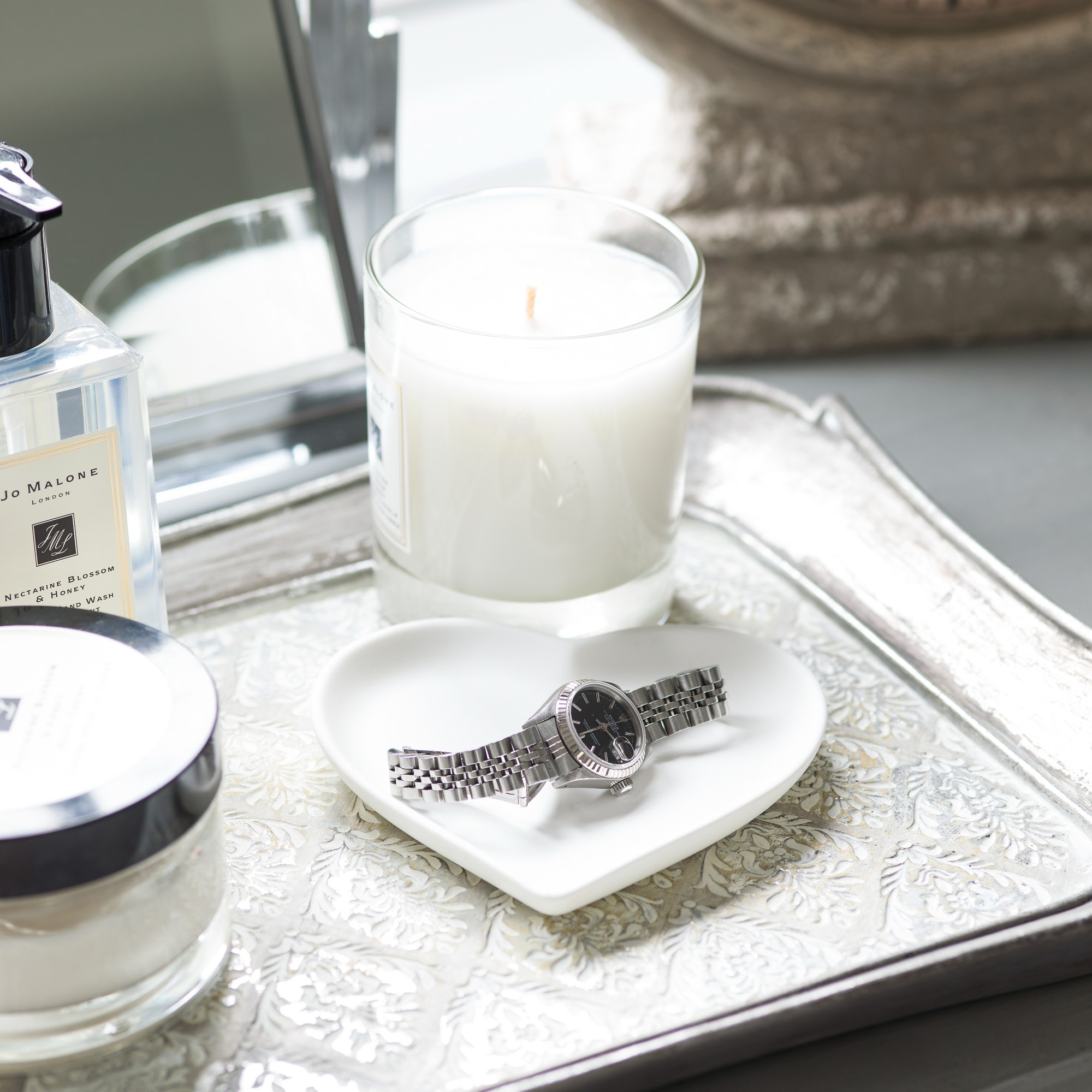This genius hack fixes candle tunnelling with a kitchen essential everyone has at home
The dreaded candle tunnelling finally has an easy cure


Are you stuck in a rut because your best scented candle has tunnelled? We know how annoying candle tunnelling can be, especially because once it's happened, it’s very difficult to get rid of. But we just stumbled upon a rather genius hack solving how to fix candle tunnelling once and for all.
What’s even better is that all it takes is a single kitchen essential that you’re sure to have in your cupboard already. Plus, while consulting our candle experts, we ended up coming across yet another clever idea about how to fix this issue that’s just as easy. Here’s what we found out...
How to fix candle tunnelling

If you’re here, you probably already know what candle tunnelling is. But on the off chance that you don’t or you’re not sure it’s a hole that forms around the wick or wicks in multi-wick candles. The surface of the wax is uneven as the sides remain raised.
So how can you fix it? Two words - aluminium foil. Instagram and TikTok are populated by videos like the one below by @hotelcollection talking about this genius hack of fixing candle tunnelling by wrapping the candle in foil.
They first light the wick and then wrap foil around the outside of the candle holder, leaving some foil over the top (you want enough to fold, so this will depend on the size of your candle). Next, they fold the excess foil over the top, about two-thirds of the distance between the edge and the wick. It's a a gently crushed fold, rather than pushed down onto the wax itself – think loosely covering a tray in the oven, not a tight wrap.
Then just leave to burn for two to three hours and it will do its magic...
‘The aluminium foil hack is genius in my opinion – especially as a quick fix,’ says Stacia Prince, co-founder of candle brand Control & Chaos. ‘Simply just using foil will totally change the game for some people. It works a treat every time. Using aluminium foil definitely has been one of the best tricks I’ve heard to give your candle another life.’
Sign up to our newsletter for style inspiration, real homes, project and garden advice and shopping know-how
But are there any downsides to this technique?
‘You'll need to be careful that the candle does not become overly 'hot' and cause you to have a much deeper melt pool than the candle was designed to have,’ warns Sophie Parker, founder of candle brand The Flora Lab.
‘Not only is this an increased fire risk (if the candle gets knocked over), but you also run the risk of burning off more of the fragrance than intended, leading to poorer scent performance on subsequent burns.'
Alternative technique

It turns out that the foil hack is not the only DIY idea around for fixing candle tunnelling as explained by our experts. Another way to even out your candle surface is by utilising your hairdryer.
‘The hairdryer method is also an alternative way to fix candle tunnelling,’ says Antonia Ogunsola, co-founder of Okiki Skincare, which also produces scented candles.
‘Use a hair dryer to melt the wax around the candle, for safety cover your eyes with goggles and use newspaper on the floor as it can get messy. Use the hair dryer from afar and slowly move it closer to the wax. Gently heat the top surface of the candle at a appropriate distance.’
What is candle tunnelling caused by?

‘Not letting your candle burn long enough will lead to candle tunnelling and it's nearly impossible to reverse once it starts,' explains Stacia. 'A candle has its own memory – if you just got a new candle and burnt it for just 20/30mins, there isn’t enough time for the wax to fully melt to the edges. This means next time you light the candle, the wax will almost remember this, and only burn to that same edge, again and again.'
But it’s not always your fault (even though most of the time it is!). Sometimes, the manufacturer is at fault as explained by Sophie. ‘Tunnelling in candles traditionally happens due to two reasons. Number one, your candle has been incorrectly wicked, with a smaller wick than is correct for the diameter of the candle jar.’ This usually occurs in cheap, mass-produced candles.

Prevention is always the best cure of course. As brands always share a recommended length of the first burn so that you’re burning candles evenly and avoid this very problem from ever occurring.
‘It is key to make your first burn the longest,’ insists Poppy Wall, founder and creative director of Eym, a brand of natural candles, diffusers and fragrances. ‘We always suggest 2-3 hours. Also if the melt pool doesn't reach all sides of the glass, tilt the wick in the direction you want to burn, this always evens things out nicely.’
So no more butter knife scraping or pen poking into that uneven wax anymore.

Sara Hesikova has been a Content Editor at Ideal Home since June 2024, starting at the title as a News Writer in July 2023. She is now also the Ideal Home Certified Expert in Training on Furniture, and so far has tested over 150 different sofas.
Graduating from London College of Fashion with a bachelor’s degree in fashion journalism in 2016, she got her start in niche fashion and lifestyle magazines like Glass and Alvar as a writer and editor before making the leap into interiors, working with the likes of 91 Magazine and copywriting for luxury bed linen brand Yves Delorme among others.